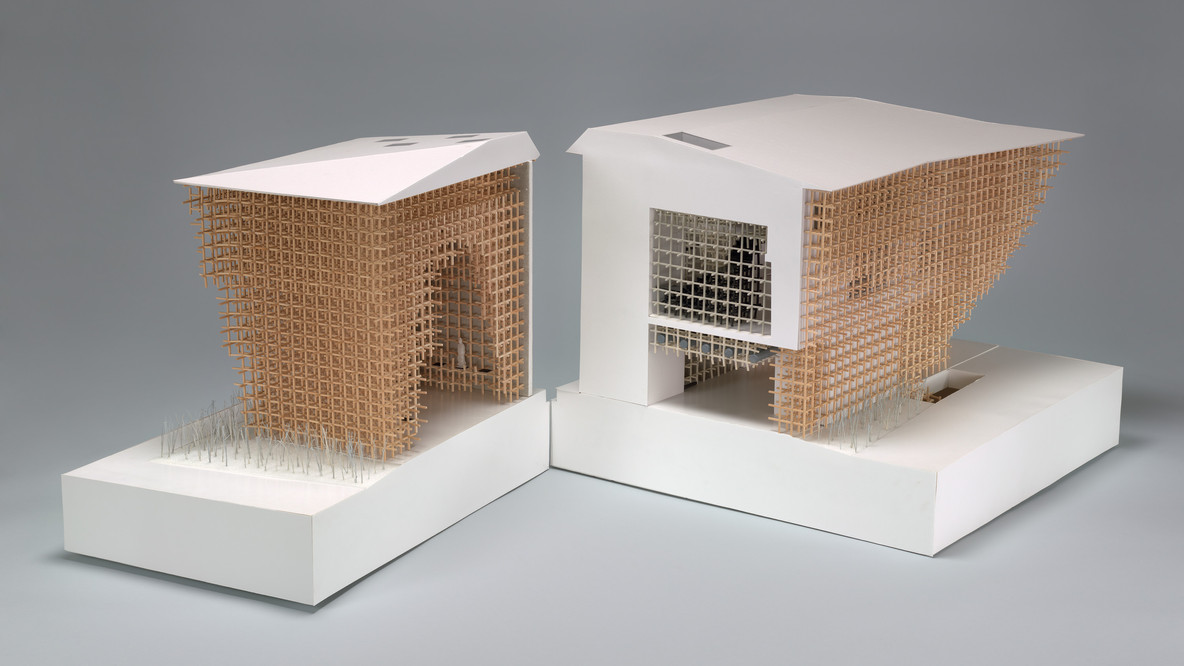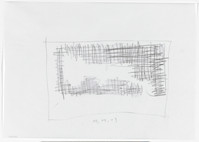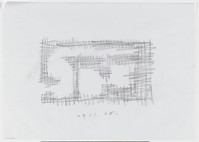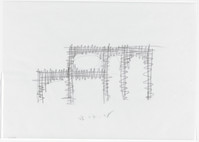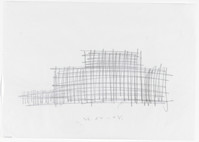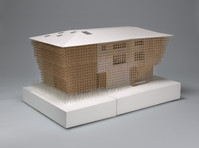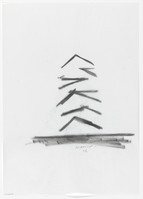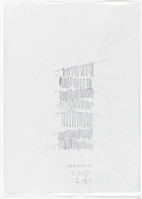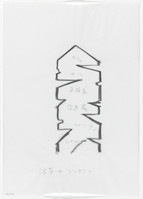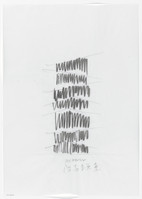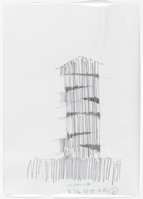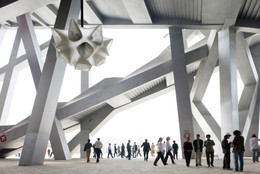“Sushi is a good metaphor for my architecture. The importance in sushi is to choose the best material from the place, in season.”
Kengo Kuma
Architect Kengo Kuma likens good architecture to good sushi. The key to both, he contends, “is to choose the best material from the best place, in season.” Many of his buildings are fashioned from local and ancient components, crafted and assembled with deference toward the landscape.
Kuma was born in Yokohama in 1954 and came of age during Japan’s postwar economic boom. After training in architecture at the University of Tokyo, he pursued graduate research at Columbia University, where he met architectural historian Kenneth Frampton in 1985. Frampton’s writing on critical regionalism, which the historian defined as a mediation between the universal language of modern architecture and the distinct geographical context of a particular site, provided a foundation for Kuma’s emergent architectural ideology. He returned to Japan in 1986 and, in 1990, established Kengo Kuma & Associates, now a multinational firm with hundreds of projects on multiple continents.
The most challenging years of Kuma’s early career were also his most formative. When Japan’s real-estate market burst in late 1991 and design commissions in the capital dried up, he turned to small-scale projects in Tōhoku and Shikoku—rural regions whose mountainous topographies had long isolated them from the cultural and economic advancements emanating from Tokyo. Kuma worked closely with local craftsmen and cultivated a keen appreciation for architecture that used local materials. This is evident in much of his work from the 1990s, including Water/Glass (1995), a guest house overlooking Atami Bay. Inspired by the German architect Bruno Taut’s enthusiasm for the “framing of nature with nature,” Kuma covered an expansive terrace with a thin layer of water to foster visual continuity between structure and ocean.
A writer as well as designer, Kuma often deploys vivid polemics. His text, Anti-Object: The Dissolution and Disintegration of Architecture (2008), is a critique of what he calls “objectification,” or the understanding of architecture as a structural imposition on the landscape. “Buildings that are deliberately made distinct from their environment,” Kuma argues, “are very different from those that attempt to mitigate this isolation, and the difference is perceptible to everyone who experiences them.” The physical devastation wrought by the 2011 Tōhoku earthquake and tsunami amplified Kuma’s critique of the “extreme imbalance” between buildings and nature in his native country. He called for greater humility among architects, imploring them to strike a balance between form and material in their designs.
The idea that a more harmonious and place-rooted form of architecture can be achieved through the careful manipulation of sensorial experience—light, acoustics, and even scent—has been central to Kuma’s practice since its inception. He tends to employ materials long used in Japanese building traditions, including ceramic, stone, bamboo, and wood, as the primary form of visual expression in his buildings. For the GC Prostho Museum Research Center (2010) in Aichi Prefecture, he designed a lattice structure derived from chidori, a traditional Japanese toy in which wooden rods are slotted together without the use of nails or adhesives. Crafted by local toy-makers, the rods form a layered, porous envelope that filters sunlight into a gallery. His design for the Asakusa Culture Tourist Information Center (2012) near Sensō-ji, Tokyo’s oldest Buddhist temple, is subdivided into seven single-story volumes stacked vertically—a human-scale composition that yields to the low-rise fabric of the Shitamachi neighborhood. Kuma approached his design for the Japan National Stadium, built for the 2020 Summer Olympics in Tokyo, with similar deference to history and the environment. A series of overlapping eaves evoking centuries of Japanese architectural practices are affixed with wood louvers sourced from each of the nation’s 47 prefectures. Even as his practice expands into dense urban contexts, Kuma retains his longstanding commitment to critical regionalism, defining architecture fundamentally as “an act of producing a thing from a place.”
Note: opening quote is from Christine Murray, “Kengo Kuma Says Architects Should Learn from Sushi,” Architects Journal, July 14, 2008. https://www.architectsjournal.co.uk/news/kengo-kuma-says-architects-should-learn-from-sushi/1731198.article.
Aaron Smithson, 12-Month Intern, Department of Architecture and Design
